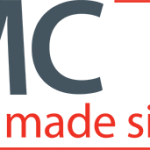So, you’ve done your research and selected the market niche and the type of your mHealth app. Now it’s time for planning and estimating the project scope, budget, and main features of your product. Healthcare mobile app development can be daunting and time-consuming unless you’re well prepared.
Follow these steps to make sure you don’t miss out on anything important.
-
Contents
Understand your audience
Target audience analysis is a crucial part of your product discovery phase. The target audience represents more than just users of your app. It’s a huge market segmented by various factors, including country, gender, age, education, income level, lifestyle, etc.
There’s no way to build a successful medical app without understanding users’ needs. Each region has its specifics and regulations, so start by choosing the targeted countries for your platform. In 2020, the global mobile health market revenue share in North America was 38%. Europe and the Asia-Pacific took other parts of the pie with shares of over 25%.
Your audience research will give you a clue on necessary features and general expectations from a mHealth app.
-
Outline core features for MVP
Unfortunately, you cannot have all the cool features at once — otherwise, the development time and cost will be outrageous. That’s why you should separate must-have from nice-to-have features for your MVP. If you’re stuck on prioritizing the features, the business analysis will help you better understand your product requirements and business needs.
The key features of your medical app for doctors will depend on the chosen application type. Here is a brief list of mHealth apps functionality:
- Patient data monitoring
- Secure doctor-patient communication
- File exchange
- Appointment scheduling
- Integration with EHR
- Integration with payment systems
- Integration with Google Kit and Health Kit
- AI health assistant
- Progress tracking and analytics
- Cloud data storage
- Cross-platform accessibility
- Notifications
Go for essential features that reflect your app’s concept in the first place. You can always add more functionality after the MVP is released.
-
Take care of UX/UI design
While the fancy design is not a must for a medical application, usability could be the turning point for your app’s success. Paying attention to UX and UI design ensures smooth interaction between the users and your brand.
Follow these rules to make your healthcare app user-friendly:
- Optimize user journey. Make all actions as easy as possible.
- Choose an ergonomic information architecture. Highlight core features with UI design.
- Make sure your design is responsive. Adapt the app’s interface to various platforms and screen sizes.
- Empathize with your users. Find out what your audience needs and give it to them.
- Test your design. Validate your ideas through usability testing and user feedback to upscale your app.
You can choose a more conservative or modern design depending on your target audience’s preferences. Planning all details and visualizing them with design prototypes will save you costs and shorten time to market.
-
Pick a dedicated development team
The qualifications and experience of the chosen development team make a big difference in the prosperity of your product. Hiring in-house developers increase the project cost and require additional time while working with freelancers doesn’t guarantee the expected result.
The best option is to choose a close-knit team with experience in healthcare mobile app development. Entirely focused on your project goals, it takes care of the whole development process from hiring to project management. A dedicated team accelerates the product development lifecycle and provides smooth and effective communication to achieve the best possible result.
-
Consider security compliance
Since healthcare applications handle a lot of personal information, it’s vital to keep patient data safe by complying with legal and privacy regulations. The following list includes regulations needed for medical apps within the US market:
- HIPAA. Adherence to HIPAA is mandatory for all apps that process and store Protected Healthcare Information (PHI) such as CT and MRI scans, lab results, and doctor’s notes.
- CCPA. This law informs patients about the collected data, provides reports, and removes the data at the request.
- NIST. It’s a cybersecurity framework that offers a wide range of tools and services explicitly for mHealth applications.
In other words, there is no way of launching a medical app without following cybersecurity standards.
-
Choose app monetization model
Whether you’re building a medical app or any other app, you can choose from the same list of monetization strategies. Your options include:
- Freemium. The idea is to give access to basic features while offering advanced functionality for a premium account.
- Certified content. This strategy involves providing free access to a limited amount of content. After users reach the limit, they need to sign up and pay for a subscription.
- Relevant advertising. You can bet on targeted mobile ads that use GPS or beacon-based localization.
- Subscription model. Offer different subscription plans for doctors or patients.
Whichever monetization strategy you choose, make sure it’s not annoying or disruptive for user performance.


